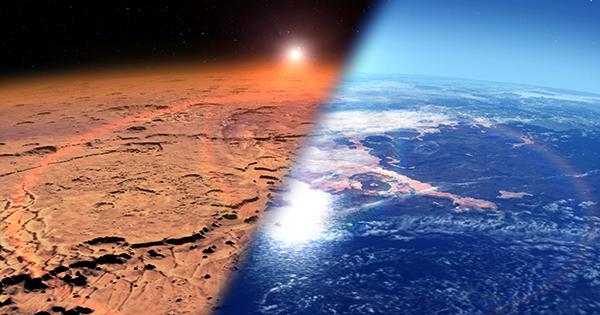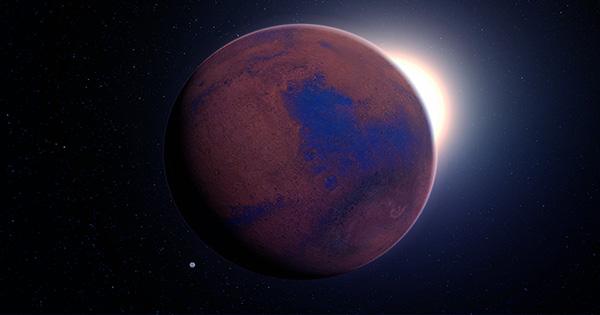As the quest for life on Mars continues, with the Mars Sample Return program expected to return samples of the planet in the early 2030s, one scientist has proposed that we may have discovered life on Mars about 50 years ago. Then, in what would not have been an ideal first impression, we demolished it.
Two landers touched down on Mars long before the Curiosity rover arrived. In addition to collecting the first photos from the Martian surface, NASA’s Viking Project saw the landers undertake biological studies on the Martian soil, primarily to seek indications of life.
Scientists were perplexed by the results, which were rather unexpected. The majority of the experiments were unsuccessful. Traces of chlorinated organics were discovered in one phase of the experiment, although these were thought to be contaminants carried from Earth at the time.

Water containing nutrients and radioactive carbon was added to Martian soil in one part of the experiment. If life existed, the microbes would eat the nutrients and release radioactive carbon as a gas. While the initial experiment did discover this radioactive gas (the control experiment did not), subsequent results were mixed. If bacteria were present in the soil, feeding them more radioactive nutrients and incubating them for a longer period of time should result in more radioactive gas. However, a second and third injection of the mixture resulted in no more gas production. The initial good result was attributed to perchlorate, a chemical found in fireworks and rocket fuel that may have digested the nutrients.
There are, however, other options. According to Dirk Schulze-Makuch, professor of planetary habitability and astrobiology at the Technical University of Berlin, adding water to the experiment was a mistake that may have killed off the bacteria we were looking for.
He gives examples of life on Earth discovered in the most extreme settings on Earth, living totally within salt rocks and taking humidity from the air, in a post published in June for BigThink. Pouring water on these bacteria would kill them, which could explain why repeated nutritional injections did not result in the detection of radioactive gas. When you’ve just been drowned by an extraterrestrial robot, you’re not usually hungry.
Schultz-Makuch earlier proposed that Martian life could contain hydrogen peroxide in its cells.
“This adaptation would have the particular advantages in the Martian environment of providing a low freezing point, a source of oxygen, and hygroscopicity,” stated Schultz-Makuch and co-author Joop M. Houtkooper in a 2007 paper.
“If we assume that indigenous Martian life might have adapted to its environment by incorporating hydrogen peroxide into its cells, this could explain the Viking results,” Dirk Schulze-Makuch wrote for BigThink, adding that the gas chromatograph mass-spectrometer heated samples before analyzing them.
“If the Martian cells had contained hydrogen peroxide, they would have been killed.” Furthermore, it would have caused the hydrogen peroxide to react with any organic molecules nearby, resulting in enormous volumes of carbon dioxide – exactly what the equipment detected.”
Though that’s a big if, if this is true, it would mean that humans discovered life on Mars about 50 years ago and then exterminated it, much like the nasty aliens in movies.










